During the first years of the renaissance of the mechanical watch, it took a connoisseur to know how your watch was powered: only connoisseurs could recognize whether the second hand moved in one-second jumps (quartz) or tiny jerks that appeared smooth from a distance (mechanical).
With the watch being worn on the wrist, transparent case backs didn’t help either. Frédérique Constant’s Heart Beat, initially produced by punching a hole in the dial so that the balance could be seen oscillating back and forth, was perhaps the first example of mechanical watches (apart from expensive tourbillons) being out and proud.
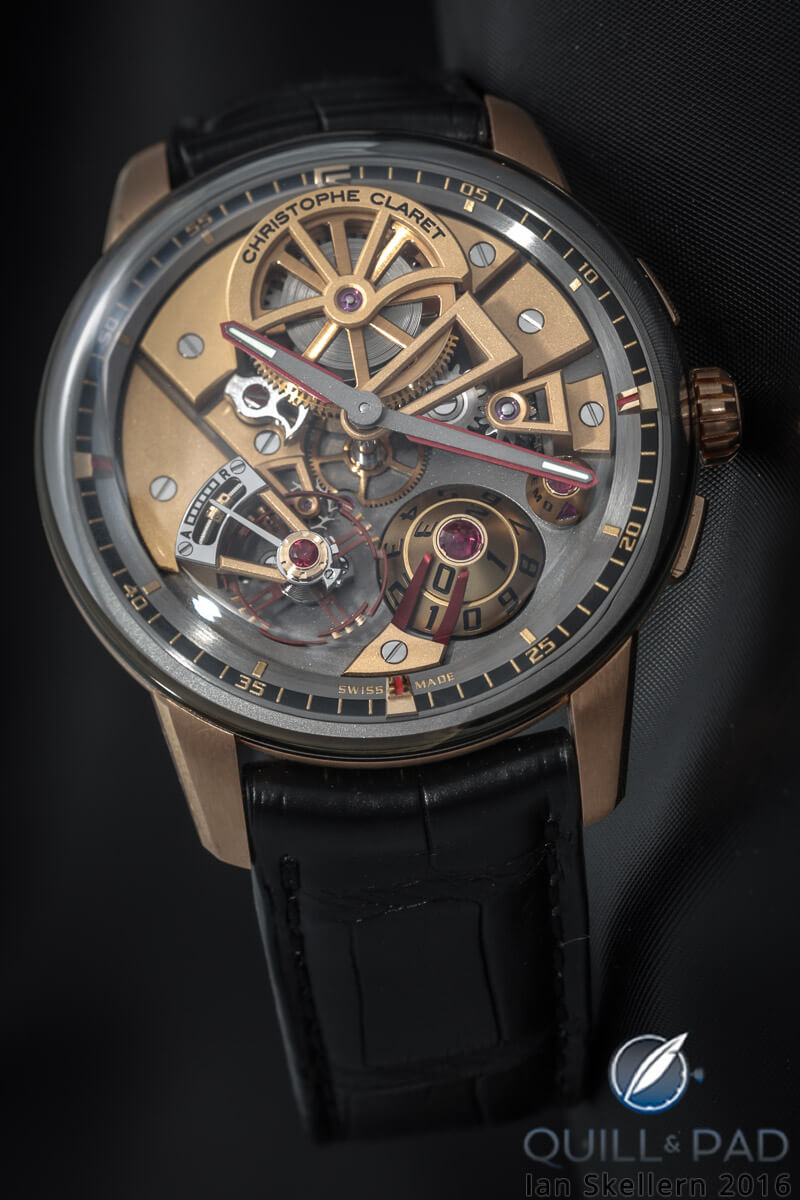
Christophe Claret Maestro in pink gold
It has now become quite common for high-end mechanicals to reduce the dial to indications around the bezel. However, Christophe Claret’s Maestro, launched at SIHH 2017, has most of the movement on display.
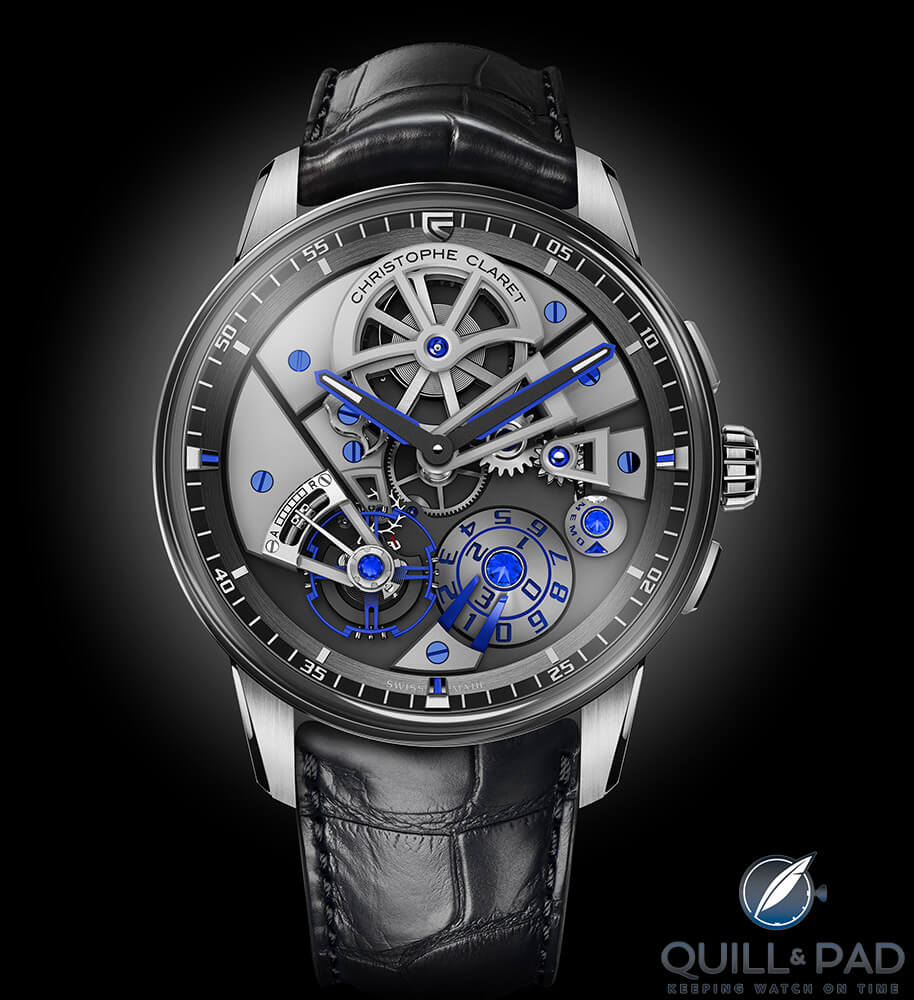
Christophe Claret Maestro in titanium
And the Maestro is a watch with a substantial “wow” factor.
As well as being a superb, innovative engineer who delights in new techniques, materials, and machines, Claret has a well-appreciated tendency to the quirky.
And the quirky feature in Maestro is a memo function equivalent to “tying a knot in a handkerchief”: it simply reminds you that there’s something special you intended to do.
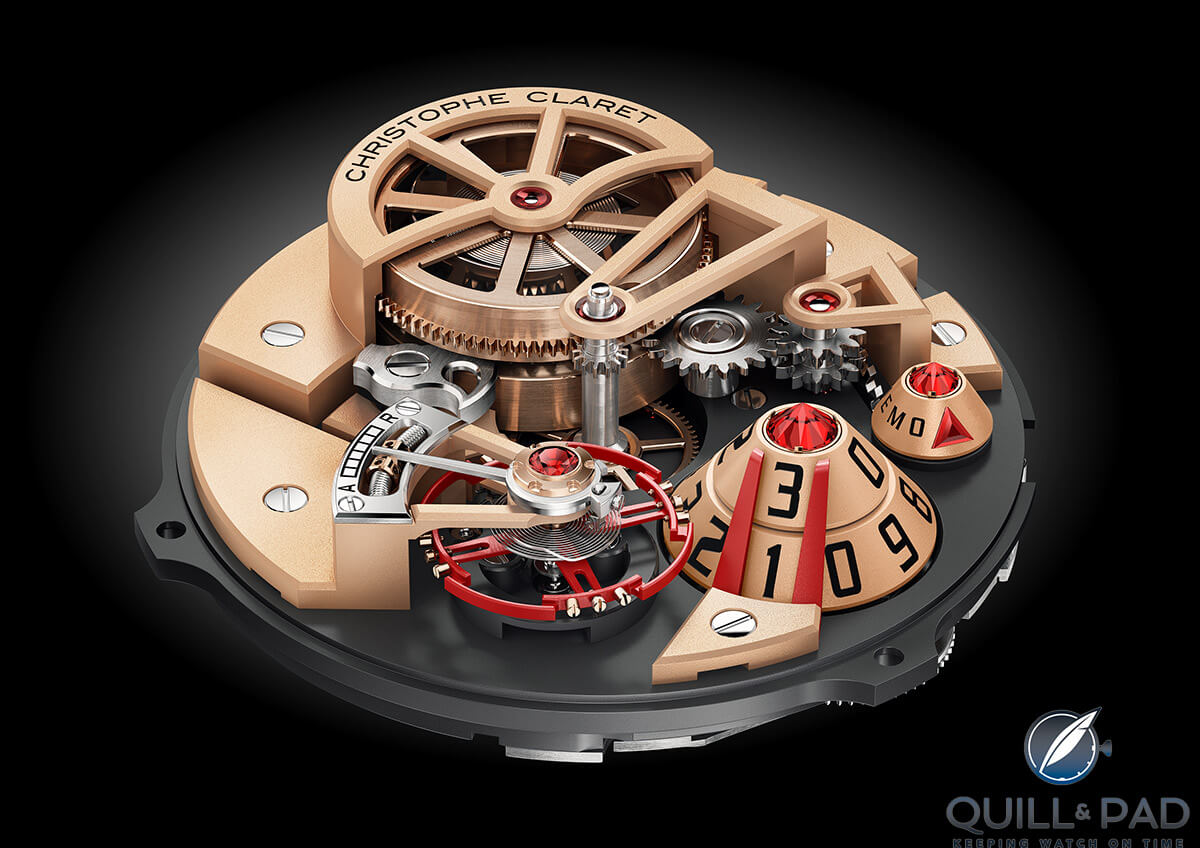
Movement of the Christophe Claret Maestro in pink gold
It consists of a smaller cone adjacent to the novel large date display that is similarly topped with a natural sapphire or ruby. The knot, so to speak, is a peripheral sapphire or ruby automatically turned toward the 6 at 2:30 am.
When you’ve done whatever you needed to do (Claret suggests saying something nice to a loved one), pressing the pusher at 2 o’clock moves the colored stone toward 12. Its place is taken by a diamond (the reward perhaps?) indicating that the task is completed.
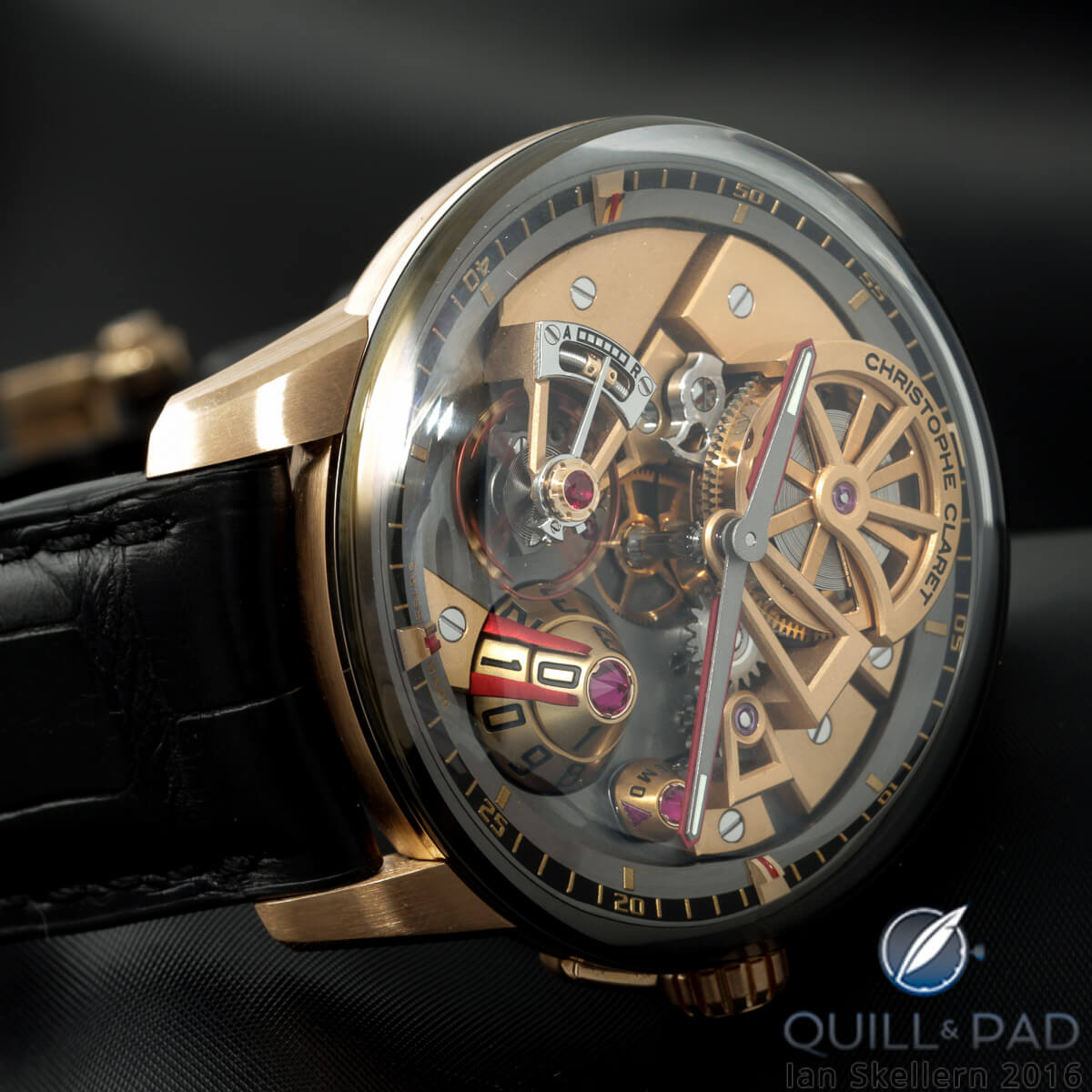
Christophe Claret Maestro in pink gold
Maestro is available in either a pink gold case with red and black features or polished titanium with blue and black. Color extends to the exposed balance, which, like most of the watch, is produced in-house.
The large date display is based on two aluminum cones, anodized in the pink gold model, with the date indicated by a fork repeating the color theme and changing instantly at midnight.
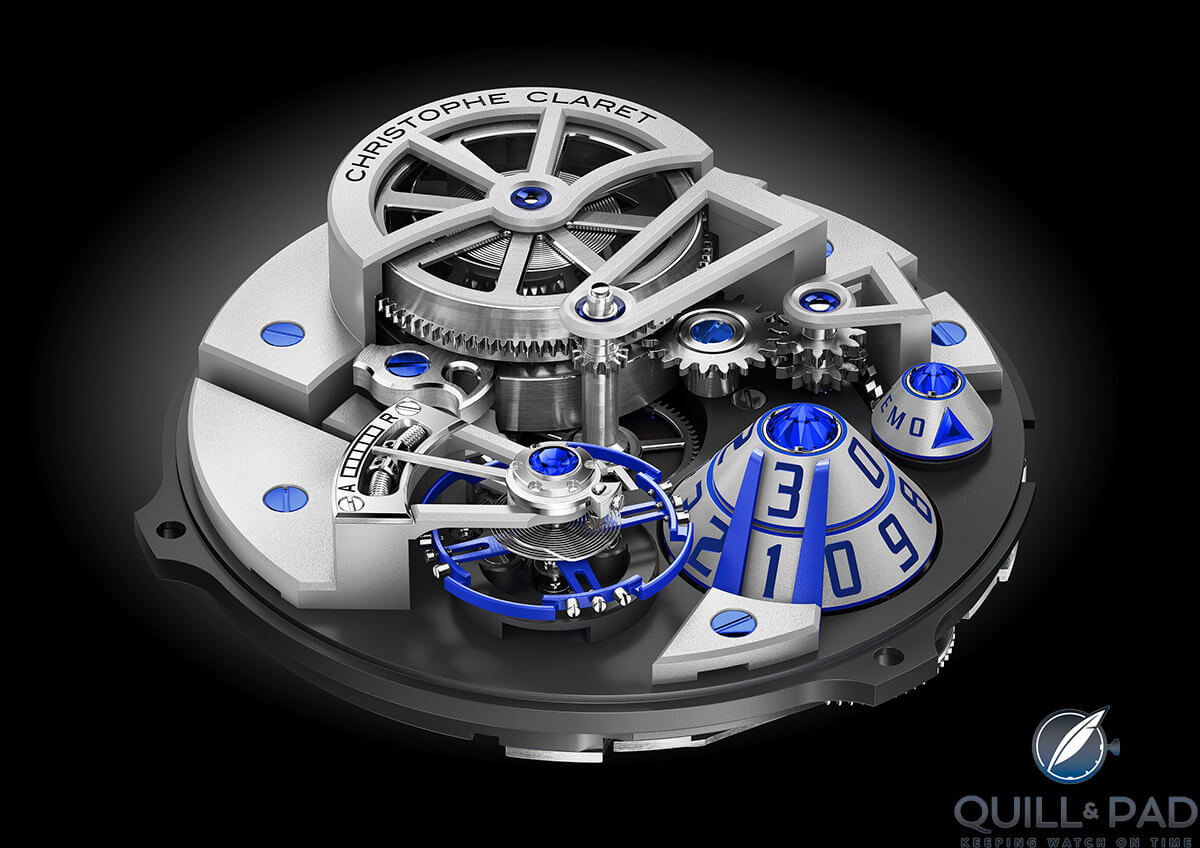
Movement of the titanium Christophe Claret Maestro
The pusher at 4 o’clock sets the date as necessary. The date and memo cones are aluminum, while the hands are made of peraluman (an aluminum/magnesium alloy). Colors are applied by vapor deposition (PVD for red and CVD for blue). Natural rubies or sapphires, as well as a diamond, provide added features to the matte black background.
The 3 Hz (21,600 vph) manual movement has a seven-day power reserve achieved by two superimposed spring barrels operating in series.
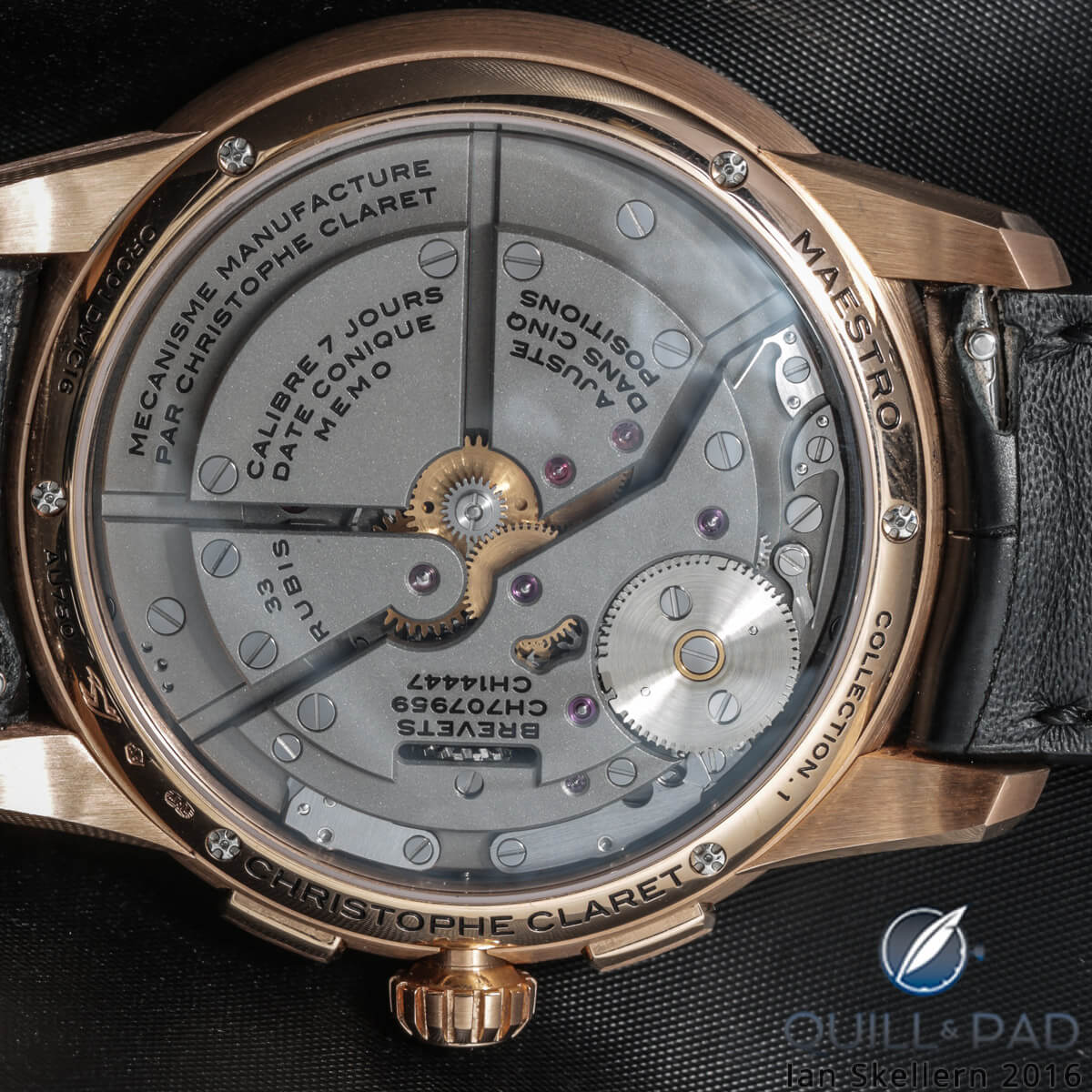
View from the back of the Christophe Claret Maestro in pink gold
Claret utilizes the most direct power reserve indication possible; the skeletonized spring barrel and bridge enable the upper spring to be seen. It’s gathered around the central barrel arbor when fully wound and at the periphery when the power is exhausted.
The winding click, seen peeping out from below the hour hand and more clearly in the peripheral view, works on the lower barrel. The barrels share the same arbor and have the same state of wind.
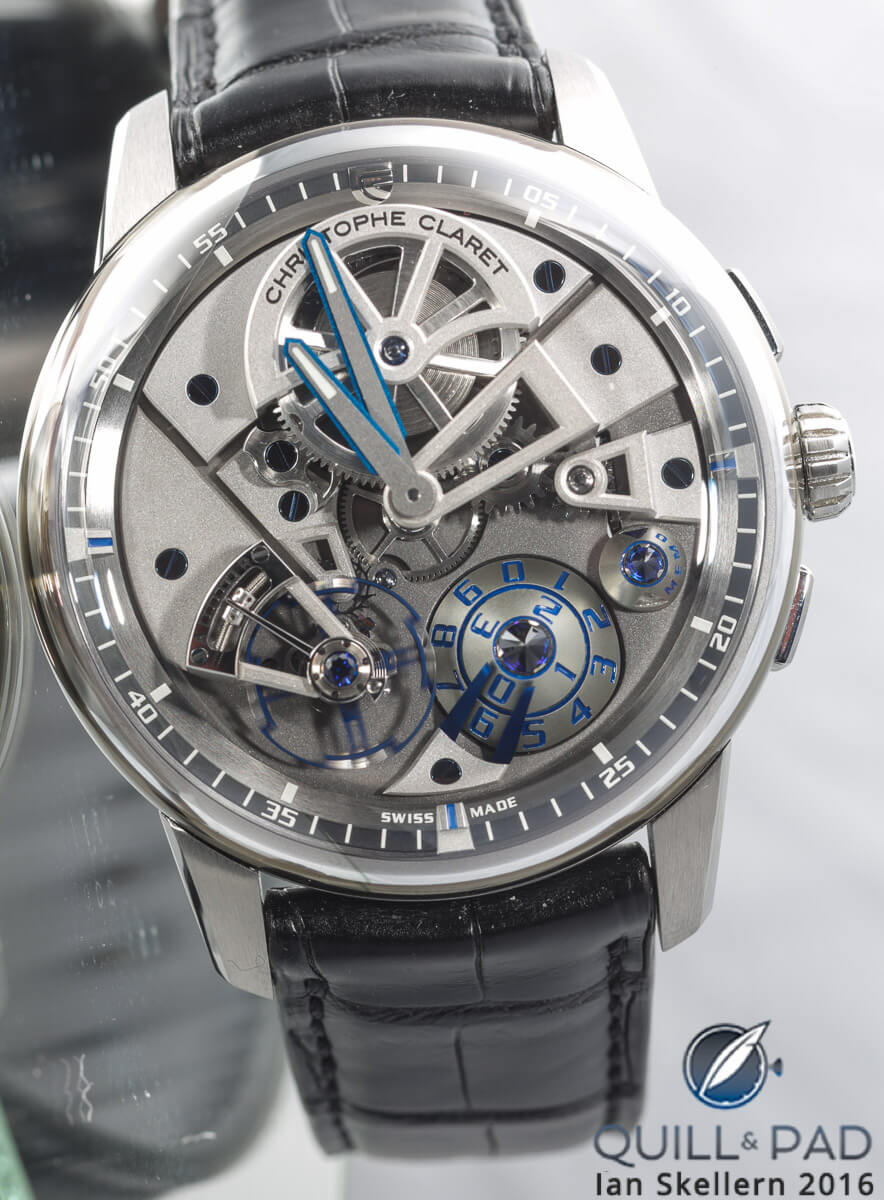
Christophe Claret Maestro in titanium
As the watch is wound, tension in the lower spring turns the common barrel arbor, winding the upper spring, whose skeletonized barrel drives the train.

Christophe Claret Maestro in pink gold
The Maestro is no shrinking violet; it’s striking appearance demands attention. Although at 42 mm, it’s small for Christophe Claret, at 16 mm it’s quite thick. And nearly half the thickness consists of the domed sapphire crystal.
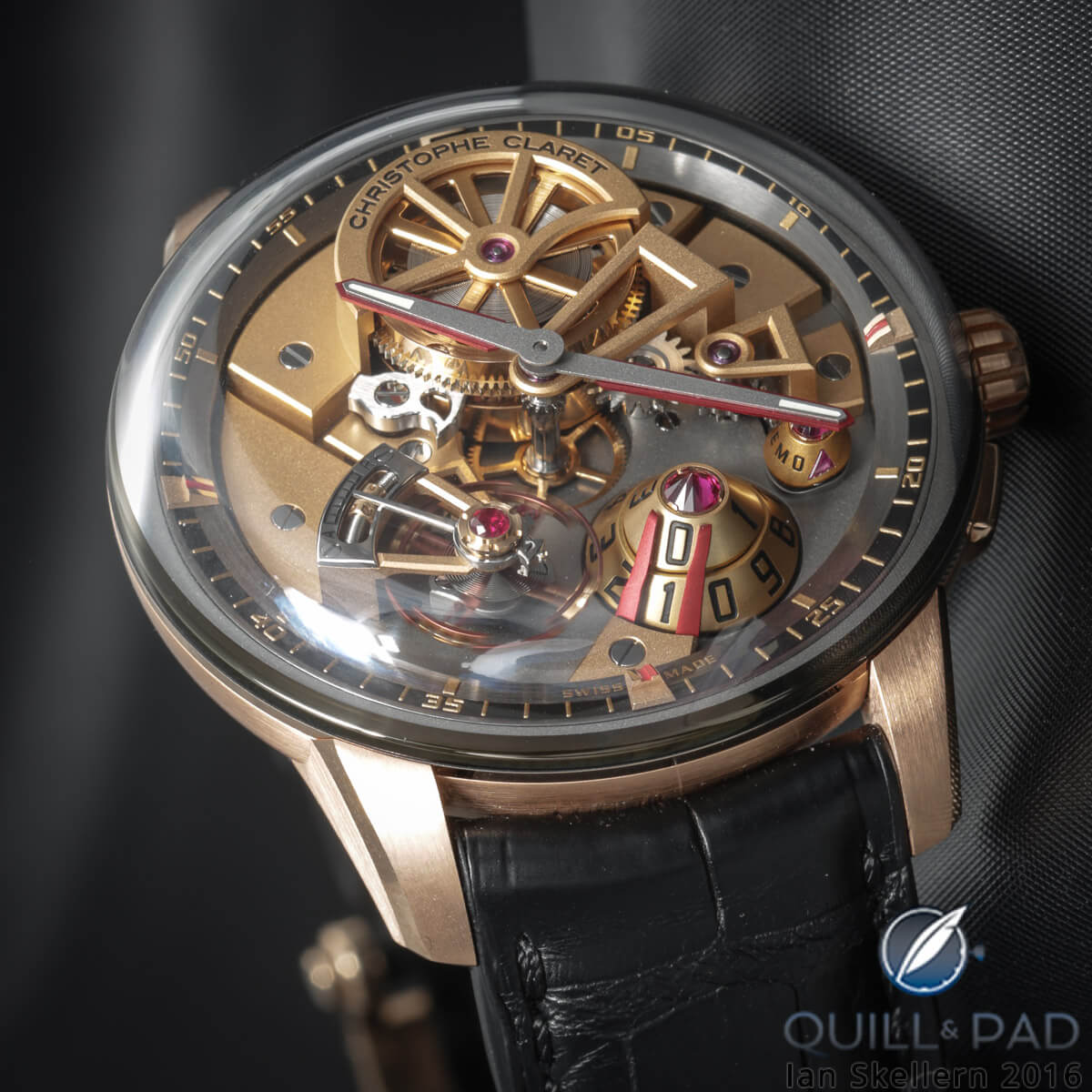
Christophe Claret Maestro in pink gold
The timing screws on the balance are recessed, and there is an interesting micrometer arrangement for fine adjustment with a nut shifted across a slightly curved screw using a special spanner.
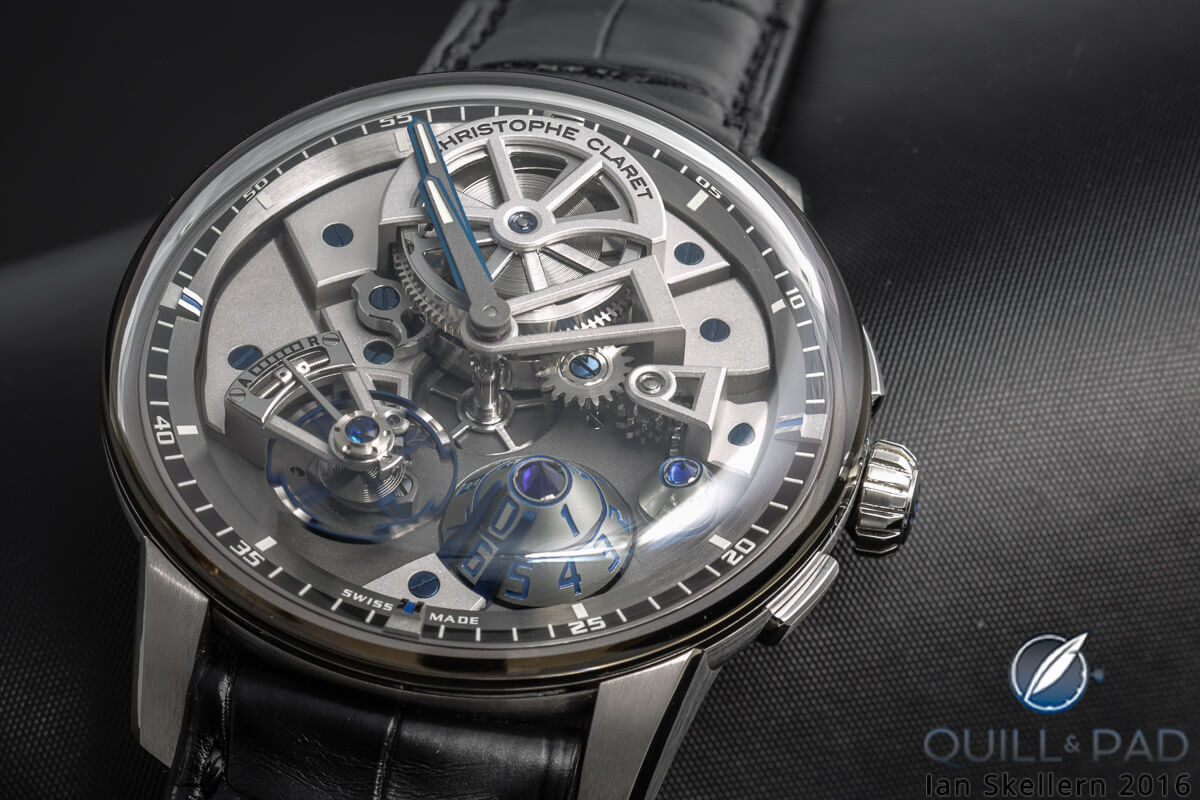
Christophe Claret Maestro in titanium
The Maestro adds another eye-catching, quirky, and interesting watch to the Christophe Claret stable. While this watch’s price is as bold as its looks, it may just help you cement a relationship!
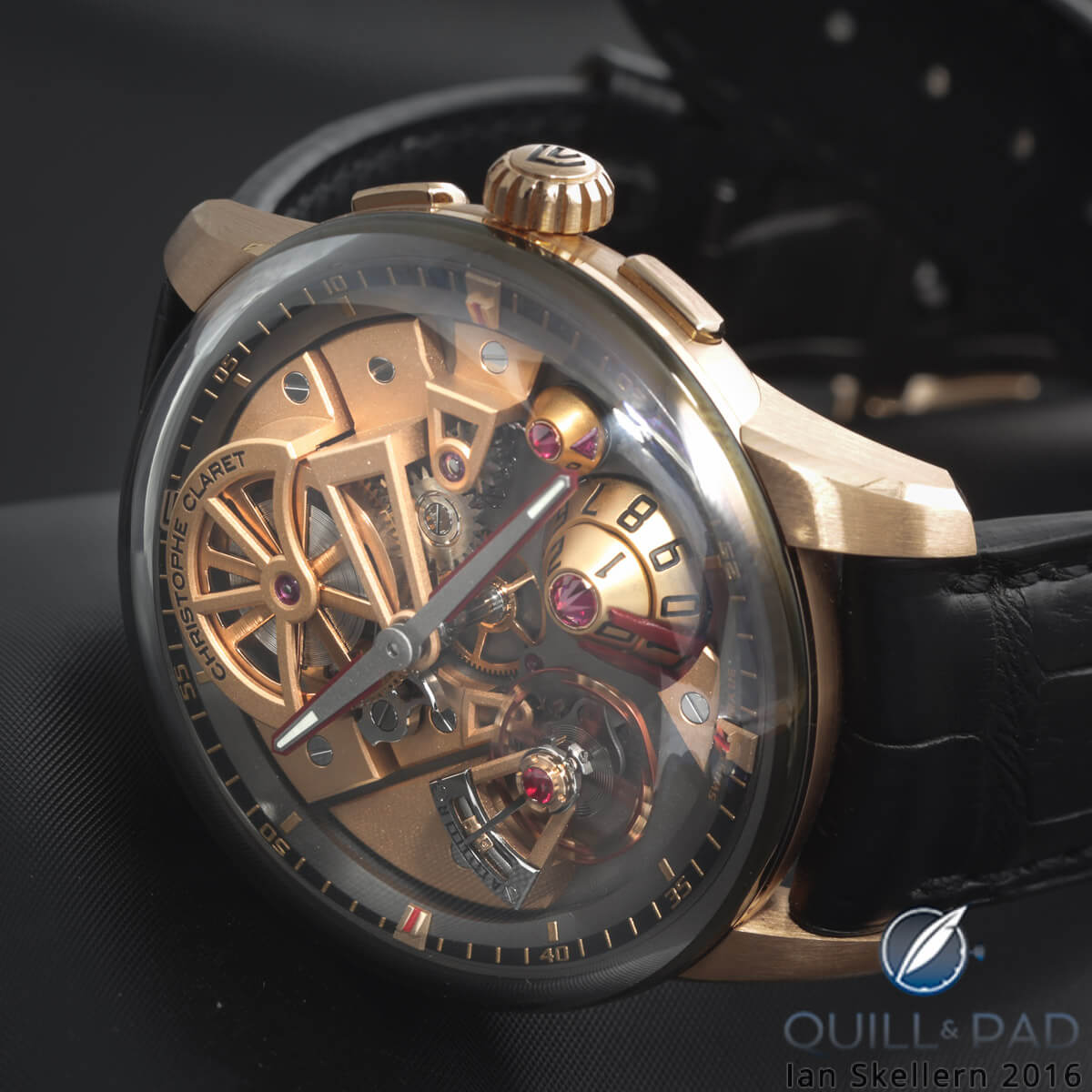
Christophe Claret Maestro in pink gold
For more information, please visit www.christopheclaret.com/en/collection-traditional-complications-watches-maestro.
Quick Facts
Case: 42 x 16.06 mm, pink gold or titanium
Movement: manually wound Caliber DMC16 with 168 hours of power reserve
Functions: hours, minutes; large date shown by disks, memo function
Limitation: 88 pieces of each case variation
Price: €63,400 / $67,600 / 68,000 Swiss francs excluding tax in titanium; 76,000 Swiss francs excluding tax in pink gold
Leave a Reply
Want to join the discussion?Feel free to contribute!





















































Helical spiral…I dont think so…looks normal breguet spiral, when I look that in SIHH live…
Thanks, Frank. It doesn’t look like a helical spring to us either in the photos, though it is a helical spring in the video so it looks like that detail was changed for the production models. We have corrected that.
Regards, Ian